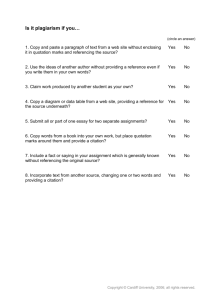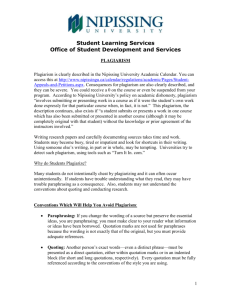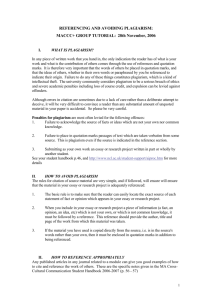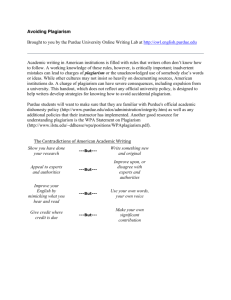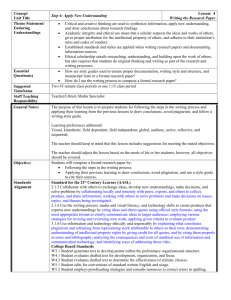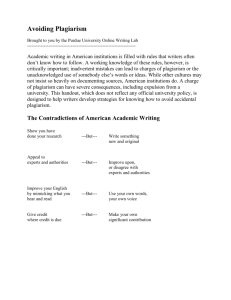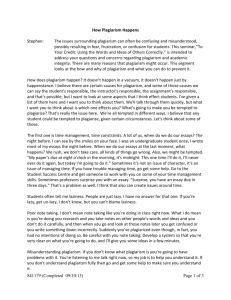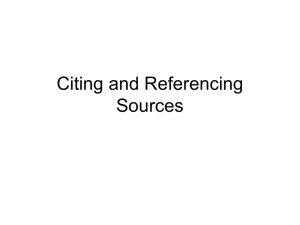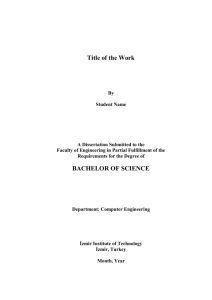Preventing and Detecting Plagiarism
advertisement
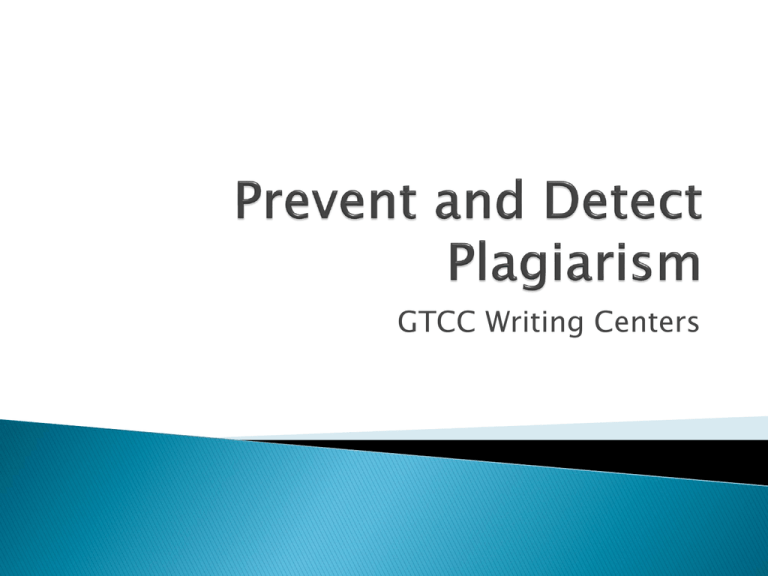
GTCC Writing Centers Quotation/Quoting ◦ Verbatim Paraphrase Summary Citation/Citing Documentation Bibliography Works Cited/References Copying from a source verbatim without using quotation marks and/or citing the source. Paraphrasing without citing the source. Paraphrasing inadequately (e.g. changing a word here and there). Intentional—a student uses material written in whole or in part that someone else wrote without quoting or crediting the material ◦ E.g. Downloading a paper off the internet ◦ Copying and pasting passages from an internet source into an essay ◦ Using a paper written by a friend Unintentional—a student does not correctly credit a source ◦ E.g. Citing a paragraph copied from a source but failing to put it in quotation marks to indicate it is a direct copy Include a plagiarism/academic honesty policy in your course syllabus. Have students sign a plagiarism/syllabus contract. Indicate in the assignment instructions: ◦ Penalties for plagiarism. ◦ Whether or not sources should be used. ◦ Requirements for documentation style, sources, and research. ◦ Draft due dates. Explain the nuances of documentation and how to avoid plagiarism. Provide students with additional resources (e.g. OWL at Purdue). Show students examples of plagiarism. Require a plagiarism quiz and/or assignment. Incorporate class activities, such as: ◦ Plagiarism case studies. ◦ Spot the plagiarized passage. ◦ Documentation style activities. Use unique, complex topics and change them frequently. ◦ Compare/contrast ◦ Works that are not widely written about ◦ Analysis on many levels Have the class as a whole or groups of students write on the same topic, research the topic together, and share source materials. Use the Q&A type of forum in Moodle for discussion forums. Provide students with one or more sources to use in addition to the ones they find. Require: ◦ Specific number of sources. ◦ Specific types of sources. ◦ Certain number of direct quotations and paraphrases in the essay. ◦ Research log. Require: ◦ Note cards. ◦ One or more sources to be an interview with a local expert, like a teacher here at the college. ◦ Students submit annotated photocopies or printouts of source materials with borrowed information highlighted. ◦ Students to acknowledge any help they received on a paper in a coversheet or memo to you (typists, proofreaders, editors, tutors, etc.). Give comments on students' drafts. Have the students draft the essay in class. Take it up, comment on it, and return it for completion. Require multiple drafts with handwritten edits and changes highlighted on the final copy. Google a phrase or sentence from the paper; put the phrase or sentence in quotation marks to limit results to an exact match. (This also works with the library databases). Google the sources to make sure they really exist. Require submission to Turnitin or a similar service. Quiz students about their research/papers. (What was your thesis? What were your main points? What order did you put them in?) Conference with students about their research during the research process. Have them bring their sources to the conference. Have students complete a demand writing on their topic, research process, or sources. Be suspicious of formatting changes—font size or color, photocopied essays, etc. Be suspicious of paper topics that change at the last minute. Be suspicious of “perfect” writing; student writing usually has grammar and spelling errors. Be suspicious of shifts in vocabulary, tone, audience, and style.
